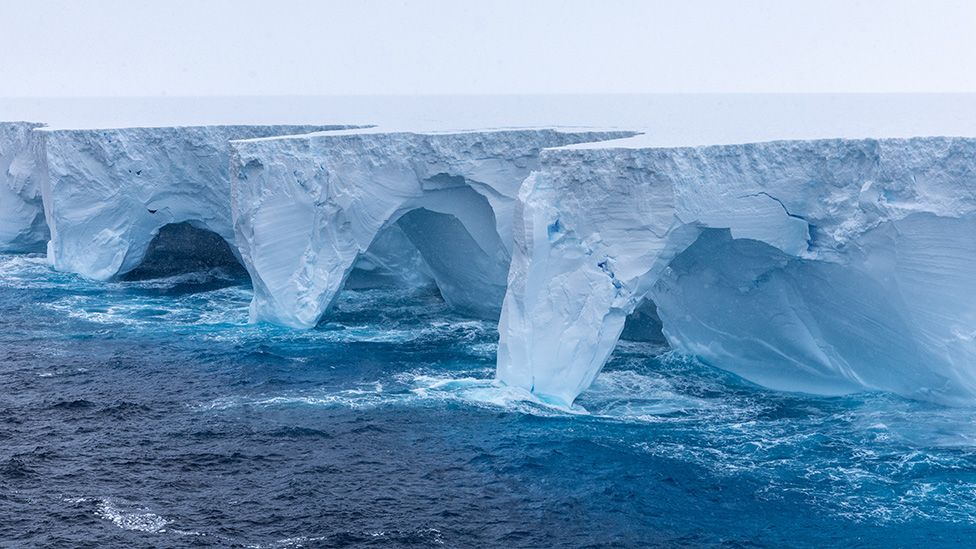-

-
-
Loading

Loading

The world's largest iceberg, known as A23a, is being shaped by erosion as it slowly melts away. Eyos expeditions recently reached the iceberg and discovered massive caves and arches carved into its frozen walls. The warmer air and surface waters it encounters as it drifts away from the Antarctic continent are wearing it down. Eventually, A23a will completely disappear. The expedition leader described witnessing waves crashing into the iceberg, causing ice to cascade and erode constantly. A23a broke away from the Antarctic coastline in 1986 but has only recently begun its migration. It was previously stuck in the Weddell Sea for over 30 years. Currently, it is being carried by the Antarctic Circumpolar Current towards the South Orkney Islands. This route is known as "iceberg alley," where large icebergs often pass by South Georgia. Over time, A23a will likely fragment and disappear completely. Eyos expedition members used a drone to capture photos and videos of the massive iceberg, highlighting its impressive size. Satellite observations track its size and thickness, which is over 300 meters (980 feet) in some places. However, as the iceberg moves away from the Antarctic, milder temperatures and surface melt will contribute to its gradual disintegration. Another large iceberg ahead of A23a, known as Iceberg D28 or "Molar Berg," offers insight into A23a's potential longevity. Despite losing a third of its size since breaking off from Antarctica's Amery Ice Shelf in 2019, D28 has maintained its compact shape. It raises the question of whether A23a, with its square-like dimensions, will have a similar long lifespan.